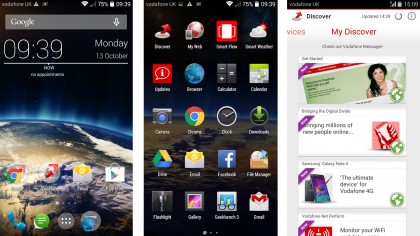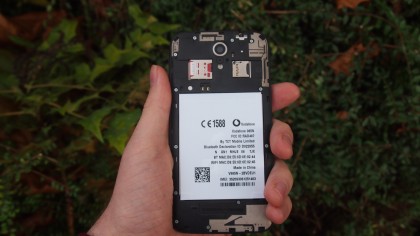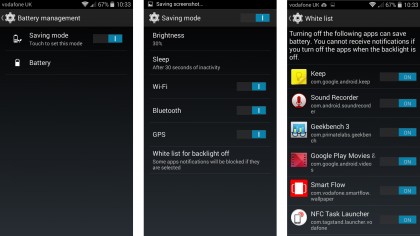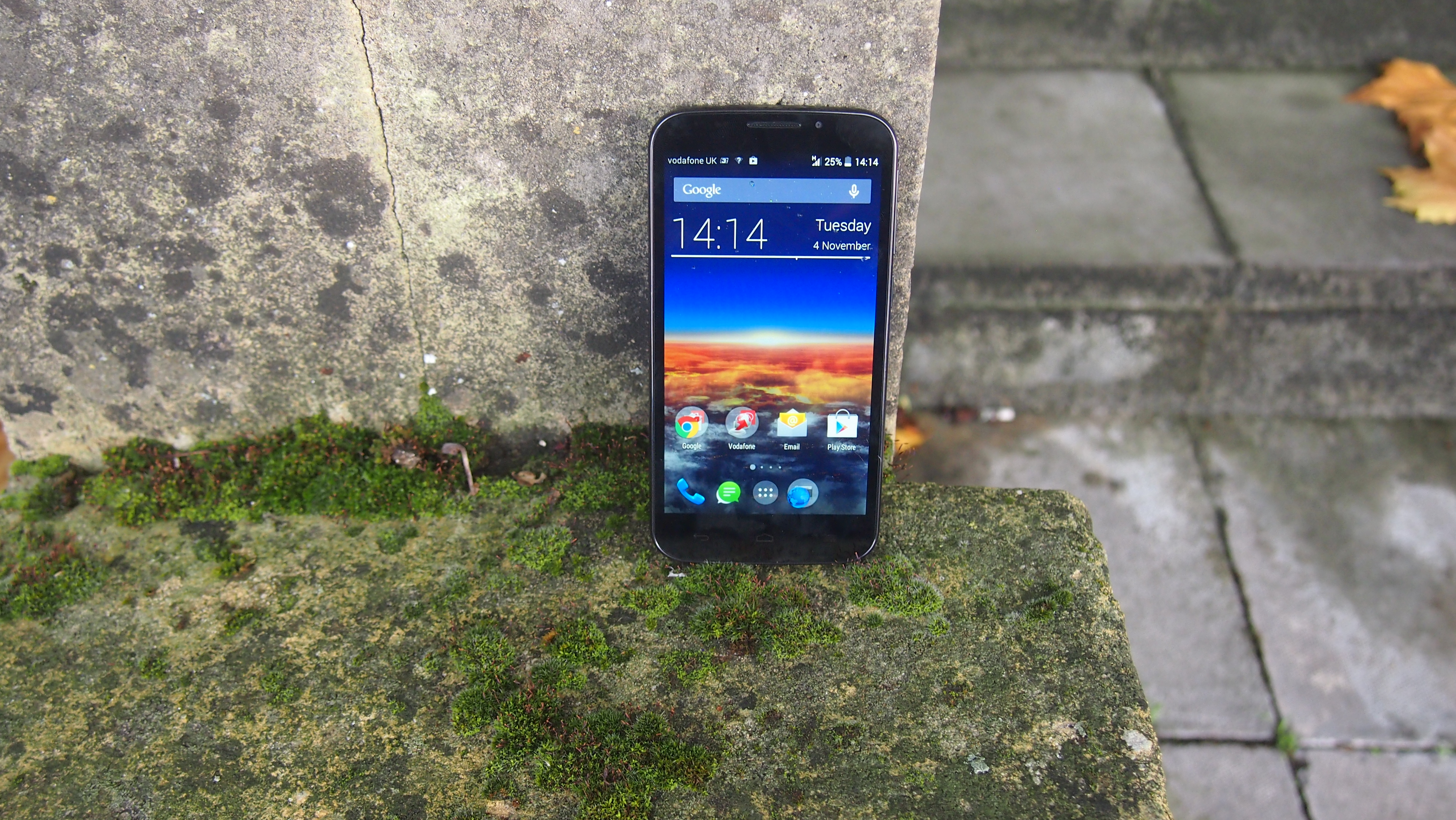Why you can trust TechRadar
To help make the Vodafone Smart 4 Power feel like a modern and feature-packed smartphone regardless of its price, it comes with Android 4.4 (KitKat) installed as the operating system.
The Android 4.4 that comes installed on the Vodafone Smart 4 Power is the standard stock affair, though it comes with a few Vodafone-flavoured apps including Vodafone Discover. This app (and its widget that's preinstalled on the home screen), offers quick access to settings such as flight mode, along with various Vodafone services and deals.
The app itself is rather bland and uninspiring, and while you might get some use out of it, I get the feeling that the app is more use to Vodafone that it is to customers. I removed the widget from the home screen pretty quickly, and I can image most people will as well.
While other Vodafone apps don't really prove to be much use (such as Smart Flow, which is simply an animated wallpaper), you do at least get access to all the apps you'd expect for Android 4.4 through Google's Play Store.

The components inside the Vodafone Smart 4 Power does the job acceptably well powering the handset. The processor is a quad-core Cortex-A7 CPU clocked at 1.3GHz, with a Mali-400MP2 GPU and 1GB of RAM.
These average specifications are roughly what I'd expect from a handset of this price range, and is good at keeping up with most day-to-day tasks.
Though Android 4.4 has felt smoother and snappier on phones with higher specs (as well as price tags), it still feels responsive on the Vodafone Smart 4 Power, though some apps take a second or two to load, rather than appearing almost instantly.
Even the rather simple messaging app had a pause before it displayed the one solitary message I'd sent. With a more populated inbox, this pause does grow slightly.
For a solid, no frills, Android KitKat experience, the Vodafone Smart 4 Power does a fine job, though it sometimes pauses when launching apps.
On the Geekbench 3 benchmark the Vodafone Smart 4 Power managed a multi-core score of 1174, slightly below the EE Kestrel's 1190 and much lower than the HTC Desire 510's score of 1330.
Battery life
The Vodafone Smart 4 Power comes with a decently sized 3000mAh battery, a good deal larger than the HTC Desire 510's 2100mAh offering, and the EE Kestrel's 2000mAh power pack.
This meant that during my time with the Vodafone Smart 4 Power, it held onto its battery life admirably. With medium to heavy use I managed to get two days use out of it. This involved browsing the internet, playing a few games, making calls and watching videos.
With lighter use, I could easily see the Vodafone Smart 4 Power stretch for at least another day. The low price and impressive battery life means that if you're a keen camper or festival goer, then the Vodafone Smart 4 Power would be a decent choice.

The Vodafone Smart 4 Power also comes with a few power saving features. These can be accessed through the battery management menu.
The battery saving options are not as exhaustive as those seen in other handsets such as the HTC Desire 510.
You can choose to dim the brightness of the screen (and by how much), as well as turn off Wi-Fi, Bluetooth and GPS. There's also a setting for 'White list for backlight off', which lets you choose which apps you want to stop running when the screen is turned off.
It's pretty basic, but it offers a quick and easy way to shut down services and features to preserve the battery when you need it.

In our battery test, which involves running a high definition video for 90 minutes with the screen at full brightness, the Vodafone Smart 4 Power lost just 20% of its battery. In comparison, the EE Kestrel lost 30% of its battery during the same test, while the HTC Desire 510 managed a similarly impressive 19%.
Playing the rather intensive Real Racing 3 game for 15 minutes made the battery drop a further 7%, though those 15 minutes were a bit of a chore due to the Vodafone Smart 4 Power's poor performance – more on that later.
Throughout the tests the Vodafone Smart 4 Power held onto its battery life admirably, and can easily withstand a day of medium to heavy use. Whether or not you'd want to use it for that long is another question...
Current page: Interface, performance and battery
Prev Page Key features Next Page The essentials and camera
Matt is TechRadar's Managing Editor for Core Tech, looking after computing and mobile technology. Having written for a number of publications such as PC Plus, PC Format, T3 and Linux Format, there's no aspect of technology that Matt isn't passionate about, especially computing and PC gaming. He’s personally reviewed and used most of the laptops in our best laptops guide - and since joining TechRadar in 2014, he's reviewed over 250 laptops and computing accessories personally.
